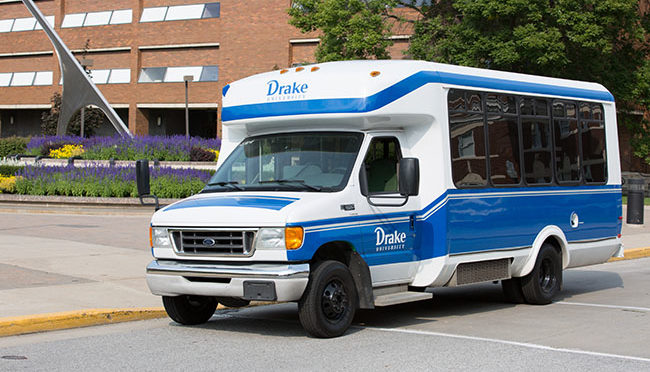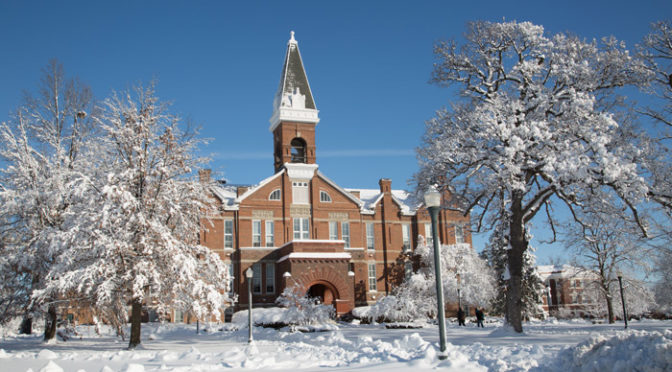It is often said that knowing how to respond in an emergency situation can be the difference between life and death. Here at Drake, a number of departments work hard every day to prevent life threatening emergencies from happening. That being said, it is difficult to prevent all emergencies so it is important to have procedures in place should one occur. Preparing for an emergency is no easy task; each situation is unique and presents its own challenges. The Drake University Emergency Response Procedures document covers multiple possible emergency scenarios and should be used as the guideline when responding to emergency situations. It is the responsibility of every member of the Drake community to be familiar with the contents of the Emergency Response Procedures document and to understand what their role would be should an emergency occur at Drake. This article will outline the Emergency Response Procedures but will not cover every detail. The comprehensive version, called the , can be found on the Drake website through either the Campus Public Safety or the Environmental Health and Safety section.
Bulldog Alert: In the event of an emergency situation that threatens the Drake campus, an alert will be sent out via phone, text, and email. These alerts provide information and instructions regarding the situation. In order to receive Bulldog Alerts, your contact information needs to be up-to-date. You can change your contact information in the Campus Life tab on blueView (click on “Bulldog Alerts”). Please note that contact information will only be used to alert you of campus emergencies.
Medical Emergencies: In the event of a medical emergency it is important to remain calm. Never attempt to move a victim unless their current location places them in further danger. Should you need to contact first responders, call 911 or Drake Public Safety at 515-271-2222. Give the dispatcher your name and location along with as much information about the victim and situation as possible. You should not attempt first aid unless you are trained to do so. Attempting first aid without the proper training can lead to further injuries to the victim and possibly yourself. Always be aware of potential blood borne pathogens and use “Universal Precautions” to protect yourself.
Crimes on Campus: As members of the Drake community we all have the responsibility to report crimes on campus. If you are the victim of a crime, witness a crime, or notice any suspicious activity, you should immediately report it to Drake Public Safety: 515-271-2222. It is important to give as much detail as possible when reporting a crime in order to assist the responding personnel.
Tornados/Severe Weather: Severe weather often strikes with little or no warning, so it is crucial you pay attention to warnings and take them seriously. When a tornado warning is issued, the city of Des Moines will sound the tornado sirens. Warning times can vary drastically, so it is important to react immediately. Upon the warning being issued you should head to the closest severe weather shelter. Severe weather shelter maps are posted in hallways throughout all buildings on campus. If you find yourself outside, attempt to make it into a building. If there is not time to reach a building, find the lowest area around you and take shelter there, covering your head and face with your hands or a jacket. Never leave a shelter area until given the all clear by the appropriate authority.
Fire and Evacuation Procedures: In the event of a fire emergency it is important to remain calm. Attempt to put out small fires using a fire extinguisher if you have been trained and you can do so without putting yourself in danger. If the fire is too large or spreads too quickly you will need to exit the building by going out the nearest exit. If possible, pull the nearest fire alarm on your way out. It is a good idea to familiarize yourself with the exit routes of buildings that you frequently enter on campus. When exiting the building, always take the stairs—never attempt to use an elevator in an emergency evacuation procedure. If you find yourself becoming surrounded by smoke, drop down and stay as low as possible. Once outside the building, make your way to the designated meeting area and wait for further instructions. Never attempt to reenter a building until given the all clear by the proper authority.
Hazardous Chemical Spills: Chemicals used in the Drake laboratories present varying levels of danger for anyone who might come in contact with them. If you work with chemicals or you work in an area that houses chemicals, you should be familiar with the ways in which different hazards are identified. In the event of a hazardous chemical spill, follow the proper procedures to prevent unnecessary exposure and injuries. Report hazardous chemical spills to Drake Public Safety (515-271-2222) or Drake Environmental Health and Safety (515-271-3804). Only qualified personnel with proper training should clean up hazardous chemical spills. In the event of a large hazardous chemical spill, evacuate the area and report the spill. If you are unsure about whether to clean up a spill yourself, call the Environmental Health and Safety Department at 515-271-3804 or 515-271-3159.
Earthquakes: Although earthquakes are a rarity in Iowa, the possibility still exists. Even a small earthquake can cause significant problems. In the event that an earthquake occurs, do not attempt to evacuate the building until the shaking has stopped. If you are inside, find a safe spot against a sturdy wall and away from any potential falling debris. Find a safe exit once the shaking has stopped, and report to the designated evacuation site. If you are outside, move to a safe area away from potential falling debris.
Active Shooter: In the event of an active shooter on campus, making quick and decisive decisions is the key. You should always move away from the sound of gunshots. If you find yourself in the same building, attempt to exit the building if you have a safe path out, warning others as you leave. If you find yourself trapped, seek shelter in a room and lock the door. Allow others to seek shelter with you, but spread out and remain as quiet as possible until the police arrive. Never open the door without proper identification of the person outside. If you find yourself in a life-threatening situation, act with purpose and aggression.
Bomb Threat: Statistically speaking, most bomb threats are fake. However, it is still important to be prepared for such an event. If you are on the receiving end of a bomb threat, attempt to acquire as much information from the caller as possible, such as location of the bomb, what the package looks like, and who placed the bomb. If you notice a suspicious package, report it to Public Safety immediately.
Utility Failure: Utility failure pertains to situations that pose an imminent danger to life, health, and property. In some instances of utility failure normal evacuation procedures can be followed: only attempt to exit a building if you can do so safely. Keep items around, such as flashlights, that may come in handy should there be a power outage. Other utility failures including gas leaks need to be reported immediately. If you smell gas or think there is a gas leak, exit the building and report the situation to Drake Public Safety, 515-271-2222, or Drake Facilities Services, 515-271-3955.
By knowing how to respond to an emergency you greatly increase your chances of making it through unharmed. Every member of the Drake community is encouraged to be proactive when it comes to safety. Familiarize yourself with the Emergency Response Procedures and ask questions if you have any. Always pay attention to your surroundings and be on the lookout for potential dangers that if unchecked could lead to an emergency situation. If you do find yourself in an emergency situation, remember to remain calm and act quickly. The Environmental Health and Safety department would like to extend a special thank you to Drake Public Safety and Drake Facilities Services for their hard work and effort in putting together the Drake University Emergency Procedures and their continued efforts to keep the campus safe.
—Submitted by Chris Nickell, Director, Environmental Health & Safety


